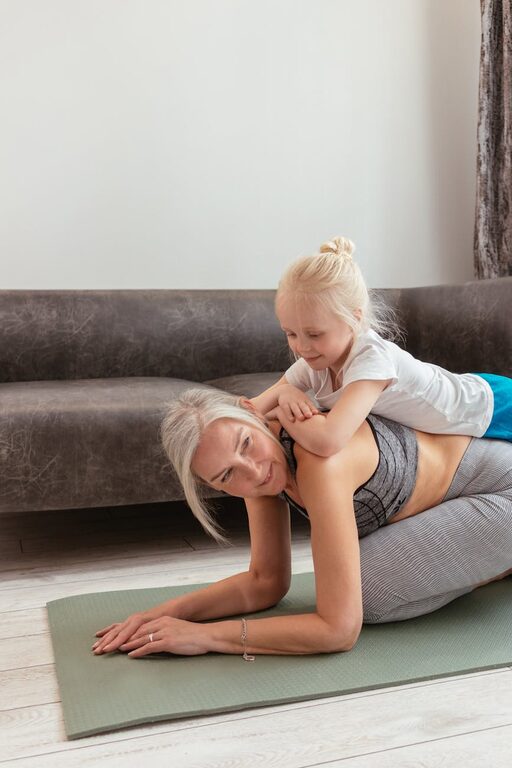Stretching is a gentle and accessible way to enhance your flexibility, relieve tension, and promote overall wellness. Whether you’re new to exercise or looking to add some movement to your daily routine, stretching at home can offer numerous benefits without requiring special equipment or a lot of time. In this beginner’s guide, we’ll explore the basics of stretching and share easy-to-follow techniques you can practice right in your living room.
Why Stretching Matters
Stretching isn’t just about touching your toes. It plays several important roles for your body including:
– Improving flexibility: Regular stretching lengthens muscles and improves your range of motion.
– Enhancing posture: Tight muscles can cause poor posture; stretching helps correct muscle imbalances.
– Reducing risk of injury: Flexible muscles are less prone to strains and sprains.
– Relieving stress: Stretching relaxes the body and mind, promoting calmness.
– Boosting blood circulation: Movement encourages blood flow to muscles and joints.
When and How Often Should You Stretch?
For best results, aim to stretch at least 3 to 5 times per week. You can even stretch daily to maintain good muscle health. Here are some tips on timing:
– After waking up: Stretching in the morning can help wake up your body and mind.
– Before or after exercise: Gentle stretching before activities prepares muscles; more thorough stretching after exercise helps recovery.
– During breaks: If you work at a desk, take short stretch breaks every hour to reduce stiffness.
Key Tips for Safe Stretching
Before you start, keep these points in mind to stretch safely:
– Warm up first: Stretching cold muscles can cause injury. Warm up with light walking or marching in place for 3-5 minutes.
– Hold stretches: Hold each stretch for 15-30 seconds without bouncing.
– Avoid pain: Stretch to the point of mild tension, never pain.
– Breathe deeply: Inhale and exhale smoothly during each stretch.
– Focus on major muscle groups: Target areas like hamstrings, calves, hips, back, chest, neck, and shoulders.
Simple Stretching Exercises for Beginners
Here’s a set of basic stretches to get you started. Remember to perform them gently and only to your comfort level.
1. Neck Stretch
– Sit or stand tall.
– Tilt your head slowly to the right, bringing your ear toward your shoulder.
– Hold for 20 seconds and repeat on the left side.
– Helps relieve neck tension.
2. Shoulder Rolls
– Stand or sit with your back straight.
– Lift your shoulders up toward your ears, then roll them back and down.
– Repeat 10 times.
– Releases shoulder stiffness.
3. Chest Opener
– Clasp your hands behind your back.
– Straighten your arms and gently lift your chest while squeezing shoulder blades together.
– Hold for 20-30 seconds.
– Improves posture and opens the chest.
4. Seated Forward Bend
– Sit on the floor with your legs extended.
– Hinge at your hips and reach toward your toes.
– Keep your back as straight as possible.
– Hold for 20-30 seconds.
– Stretches hamstrings and lower back.
5. Cat-Cow Stretch
– Start on your hands and knees.
– Arch your back up (like a cat) while tucking your chin to your chest.
– Then dip your belly toward the floor while lifting your head and tailbone (cow).
– Repeat for 10 rounds.
– Enhances spine flexibility.
6. Standing Quadriceps Stretch
– Stand on one leg, hold a chair or wall for balance if needed.
– Grab your opposite ankle behind you and gently pull it toward your buttocks.
– Keep knees close.
– Hold for 20 seconds, switch sides.
– Stretches front thigh muscles.
7. Calf Stretch
– Stand at arm’s length from a wall.
– Place your hands on the wall and step one foot back.
– Keep back leg straight and heel on the floor while bending the front knee.
– Hold 20 seconds and switch sides.
– Helps loosen calf muscles.
Creating Your Personal Stretching Routine
To build a routine, pick 5 to 7 stretches that feel good for your body and try to complete them in about 10-15 minutes. You can do stretches in the morning, evening, or both. Here’s a sample beginner sequence:
- Neck stretch – 20 seconds each side
- Shoulder rolls – 10 repetitions
- Chest opener – 30 seconds
- Cat-cow – 10 rounds
- Seated forward bend – 30 seconds
- Quadriceps stretch – 20 seconds each leg
- Calf stretch – 20 seconds each leg
Over time, as you feel more comfortable, you can add variety or increase hold times.
Stretching Tools You Can Use at Home
While you don’t need anything special to stretch, some simple tools may enhance your practice:
– Yoga mat: Provides cushioning for floor stretches.
– Stretching straps or belts: Help extend reach during hamstring or shoulder stretches.
– Foam roller: Useful for gently massaging tight muscles before or after stretching.
– Blocks or cushions: Aid with support in seated or lying positions.
Final Thoughts
Stretching at home is a simple and effective way to take care of your body—improving flexibility, easing muscle tension, and contributing to your overall sense of well-being. Starting with small, consistent steps can make a big difference, even if you have a busy schedule.
Remember to listen to your body and progress at a comfortable pace. With regular practice, stretching can become a relaxing and rewarding habit that supports your health for years to come.
—
Feel free to share your favorite stretches or tips in the comments below. Happy stretching!

